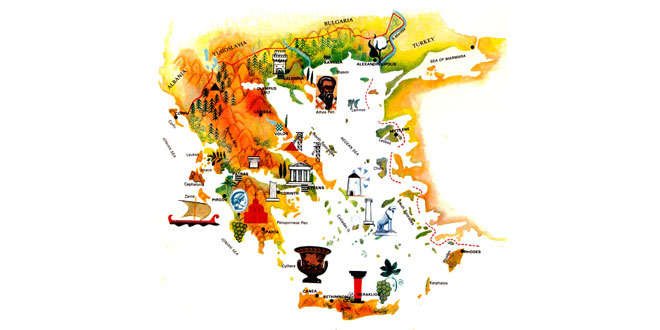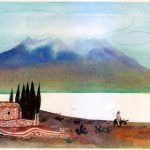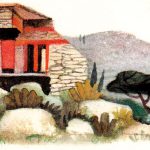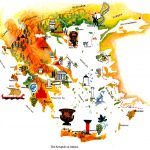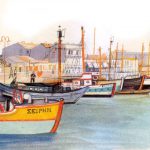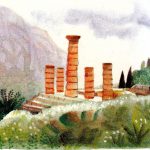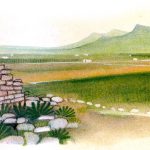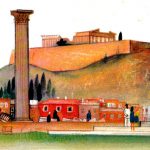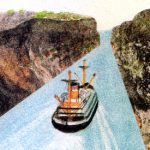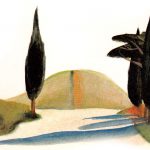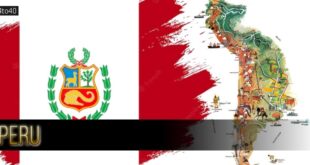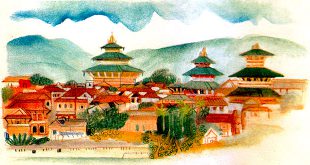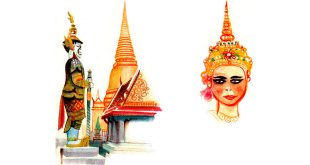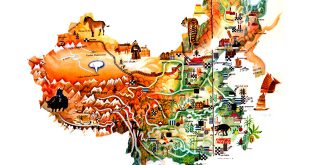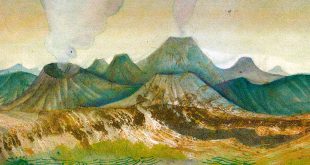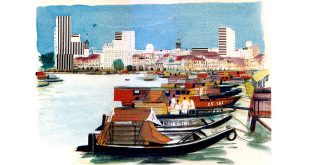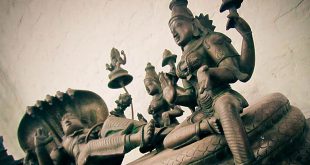Capital: Athens (Athinai)
Location: Occupies the southern part of the Balkan Peninsula and includes numerous islands and archipelagoes. Greece is bounded by the Ionian and Aegean Seas in the Mediterranean. On land it has borders with Albania, Yugoslavia, Bulgaria and Turkey
Area: 131,944 sq km
National composition: Mostly Greeks
Religion: Greek Orthodox
Official language: Greek
Currency: Euro
Administrative divisions: 13 regions, 325 municipalities, 1 autonomous state
Other major cities: Salonika, Patras (Patrai)
Highest elevation: Olympus
Chief rivers: Mesta, Vardar, Achelous, Strimon, Maritsa
Climate: Mediterranean
Greece is a mountainous country. The Pindus (Pindhos) range extends through the centre of the countrt, from north to south. The mainland peninsulas and the islands are also mountainous. The largest islands in the Ionian Sea are Corfu (Kerkira), Leukas (Levkas), Cephalonia (Kefallinia) and Zante (Zakinthos). The Aegean Sea contains the Cyclades (Kikladhes) group, the Dhodhekanisos (Dodecanese, or South Sporades), the North Sporades (Sporades), Lemnos (Limnos), Lesbos (Lesvos), Chios (Khios), Samos and Rhodes (Rhodos). Crete (Kriti) is the largest island. The only lowlands are in the lower valleys of the generally short Greek rivers.
Typical plants include the evergreen macchia scrub, oleander, bay, cypress and myrtle. Most of the original forest has been cut down and much of the land is badly eroded, but there are some woodlands at higher altitudes. Animal life includes the wolf, bear, rabbit and wild goat. Greece has a wide variety of birds.
In 1980 agriculture employed 37 per cent of the work-force. The chief cash crops are barley, citrus fruits, cotton, figs, grapes, maize, olives, sugar beet and wheat. Sheep breeding is important and goats, cattle, pigs and poultry are also reared. Offshore fishing is a major activity.
Industry employed 28 per cent of the work-force in 1980. Greece’s principal resources are bauxite and the largest corundum deposits in Europe. Non-ferrous metal ores, lead, silver and zinc are also mined. Greece also has deposits of lignite and brown coal, gypsum and kaolin. Marble is quarried in large quantities and, recently, drilling operations for oil and natural gas have begun.
The engineering industry produces tractors, lorries, mining equipment, farming and construction machinery, steam turbines, pumps and other products. Shipbuilding is also extremely important. The electrical industry supplies the domestic market with radio and television sets, telephones, refrigerators, fans and other appliances. Other major industries produce chemicals, textiles, building materials and processed foods. Greece is the world’s largest producer of sultanas. However, in terms of its per capita gross national product, which was US $4,420 in 1981, Greece is the least developed member of the European Economic Community, of which it became a full member in January, 1981.
The Greeks have always been seafarers and shipping remains an important activity. The Greek merchant fleet is the fifth largest in the world. On the other hand, the road and rail systems in the interior remain largely undeveloped.
As the cradle of European culture, Greece contains impressive historical and cultural monuments. These, together with many fine resorts, attract millions of tourists annually.
 Kids Portal For Parents India Kids Network
Kids Portal For Parents India Kids Network
